If you’re new to firearms it can be confusing hearing all the different terminology thrown around during conversations about guns. Even if you aren’t brand new, it can seem like there are always new or unknown words and phrases going around. To help you on your way to becoming a well-rounded, educated handgunner, we’ve compiled a list of terminology to be your go-to handgun glossary. We won’t get into the intricacies of what parts each and every platform has, but we’ll cover what you’re most likely to need to know.
Handgun Glossary
• A •
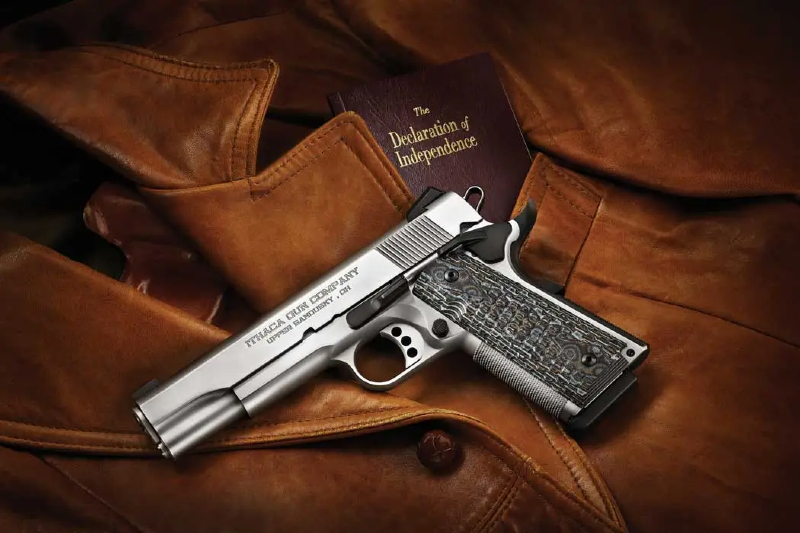
ACP: Stands for “Auto Colt Pistol.” It’s the designation probably known best by the 45 ACP, which was invented by John Browning in 1904 and would eventually be used for the M1911. There are other ACP cartridges, including 25 ACP, 32 ACP, and 380 ACP (probably the other best-known ACP-designated cartridge).
Action: The components of a gun that function together to chamber and extract/eject rounds of ammunition. There are quite a few different actions including pump-action, bolt-action, and lever-action. It’s important to note that “action” also refers to the related trigger mechanism and how many stages it has: double-action (DA), single-action (SA), double-action-only (DAO), single-action-only (SAO), or a combination of the two, DA/SA.
Ammunition: Refers to a round or complete cartridge, such as 9x19mm ammunition. A complete cartridge includes multiple components that are required to make it possible to load into a gun for firing. “Ammunition” specifically refers to those complete rounds, not the separate components needed to make a single round of ammunition.
• B •
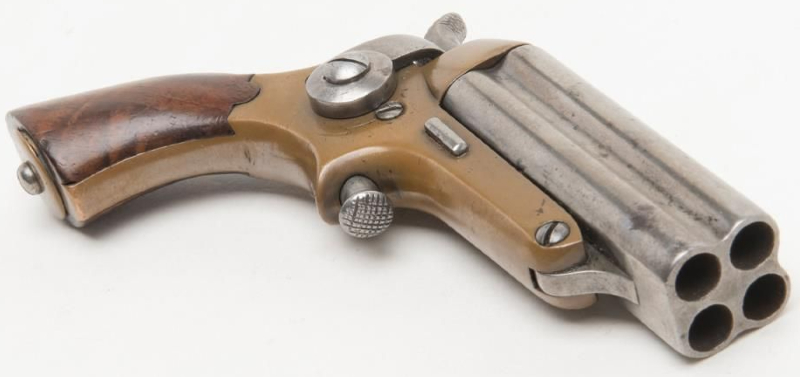
Ballistics: The study and science of a bullet’s path and performance immediately after firing. The ballistics of a bullet include but are not necessarily limited to, velocity, energy, and trajectory.
Backstrap: The part of a handgun located at the rearmost portion of the grip, the backstrap is the part that makes contact with the palm of the shooter’s strong-side hand. On some handguns, the backstrap is a solid piece while on others there are interchangeable pieces designed to make the gun fit better to the shooter’s hand size.
Barrel: The hollow metal tube that a bullet travels down to exit the gun and impact a target. Barrels can be made for an incredible number of calibers from different metals with varying finishes and twist rates. Length also varies.
Battery: When a gun is in battery, the slide or bolt is fully closed and ready for firing. When guns go out of battery, the slide or bolt isn’t properly closed, it’s stuck partway. In those cases, the gun needs troubleshooting to correct the issue which might involve clearing a cartridge that failed to eject or feed or may involve more extensive repairs.
Beavertail: Located at the rearmost portion of the gun, this is technically part of/attached to the backstrap. The beavertail is the upper portion of the backstrap that curves outward behind the slide so the shooter can take a high, firm grip with no concerns about the slide cutting their hands. Not all handguns have beavertail grips, but many do.
Blade sight: Typically, but not always, a fixed metal front sight on a gun (usually a revolver). It has the appearance of an upside-down blade affixed to the muzzle end of the barrel.
Blowback: A specific operating system of certain semi-automatic handguns. The simplest explanation is that blowback guns get their power from the movement of the case of a round of ammunition. The expanding gases created by firing force the case rearward, creating the movement, as the bullet is sent down the barrel.
Bluing: An electrochemical conversion method used to coat a gun with a specific finish that protects it from corrosion and rust. Bluing also gives guns a certain visual appearance favored by many gun owners.
Bolt: The tubular, metal component of a gun that can include parts like the firing pin, extractor, and ejector. Different bolt-action pistols have varying designs. Something that remains the same is that the bolt face must be the correct dimension to hold the base of the cartridge the gun is chambered in. It’s important to remember that there are guns that have bolts, such as AR platform pistols, that are not bolt-action. All bolts are not created the same although the general mechanism remains the same.
Bolt-Action: Guns that require the manual manipulation of the bolt to load and eject cartridges.
Bolt Handle: The knob or handle that’s part of the bolt itself. It is used to manipulate the bolt to load and eject rounds of ammunition.
Bolt Pistol: Pistols that are bolt-action rather than some other action like a semi-automatic. Bolt-action pistols have to have each and every round of ammunition loaded and ejected one at a time for firing. Because of that, they tend to have a slower firing rate than semi-automatics, but it is possible to learn to run a bolt quickly.
Break: When the trigger is pulled back to the point where the hammer is released, this is the “break.” A break on a trigger might be stiff or otherwise less than ideal or it might be clean or crisp (which are good features). Sometimes a good trigger break is referred to as a “glass rod break.”
Bull barrel: Barrels are designed to be thicker and heavier-duty with the external diameter usually widening toward the muzzle (internal dimensions do not change because they are related to the caliber the gun is chambered in). In a 1911, bull barrels lack the bushing of classic 1911s chambered in 45 ACP (among others). Bull barrels are usually used for larger calibers such as 10mm Auto to reduce felt recoil and increase durability and longevity.
Bullet: The projectile that exits the barrel of a gun during firing. A bullet is the component of a round of ammunition that is seated in the open mouth of the cartridge.
Bushing: On a 1911, the bushing is a short, hollow, thin cylinder that goes over the muzzle end of the barrel. They are removable. The bushing is designed to enhance stability and improve accuracy. Fitment of the bushing to the barrel should be secure and, ideally, will not wiggle or slip at all on an assembled 1911.
Bushing compensator: As the name suggests, a bushing compensator replaces the standard bushing on a 1911. This is done to further reduce felt recoil and muzzle rise.
Bushing wrench: The tool used to take the bushing off the barrel a 1911. This is often included with a new gun by the manufacturer but it may be wise to purchase a higher-quality bushing wrench. Make sure it’s designed to fit your specific 1911, though.
• C •
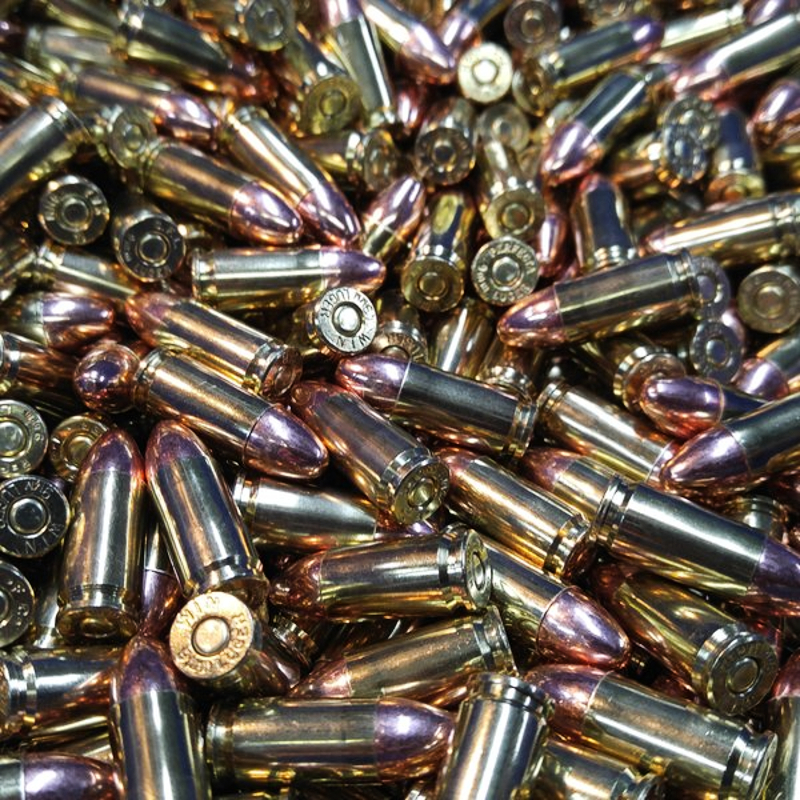
Caliber: In simple terms, caliber refers to how wide a bullet is. For example, a 9mm round has a bullet that is 0.355 inches in diameter. Caliber also refers to the diameter of the bore—the inside—of the barrel. If someone asks what caliber a gun chambered in 9x19mm Parabellum is, the correct reply would be “9mm.”
Cartridge: Usually used when talking about a complete round of ammunition that’s ready to use for firing. Sometimes also used to refer specifically to the brass or steel case of a round of ammunition.
Centerfire: When talking about ammunition, centerfire means the primer is located in the center of the base of the case. The primer is the component that is struck by the firing pin so the bullet will travel down the barrel of the gun. A centerfire handgun is one designed for use with centerfire ammunition.
Chamber: The part of a handgun where a round of ammunition is loaded, or chambered, for firing.
Co-witness: The practice of using your iron sights in conjunction with your red dot sight. When iron sights are the correct height for co-witnessing they can be used as a backup for aiming.
Commander (1911): A compact 1911, meaning it’s smaller than the full-sized Government. Traditionally, a Commander has a 4.25-inch barrel, but some manufacturers call models Commanders despite having a different size than the classic barrel length.
Compensator: A component that screws onto the threaded barrel on the muzzle of a handgun that’s designed to reduce felt recoil and muzzle rise, which improves accuracy and control.
Conversion cylinder: This is specific to revolvers and refers to a cylinder that can be dropped into the gun for the purpose of firing a different type of ammunition than the gun was first made for. Some conversion cylinders allow cap-and-ball revolvers to shoot centerfire ammunition.
Crane: On a revolver, this is a component that has two sides; one side inserts into the frame and the other into the gun’s cylinder. This part functions to help the swinging action of the cylinder as it moves away from the frame of the revolver but remains attached. This allows the cylinder to be loaded, unloaded, or otherwise accessed for cleaning or repairs.
Cylinder: The metal component of a revolver that has a cylindrical shape and has a variable number of chambers, each of which holds a round of ammunition. The cylinder of modern revolvers rotates itself with each shot fired, lining the next round-up for firing. Older revolvers had cylinders that had to be manually rotated.
• D •
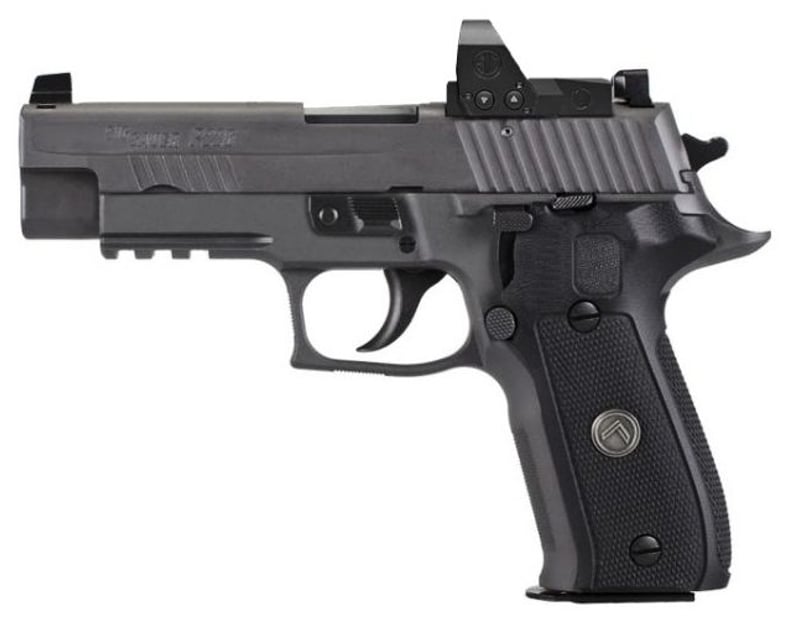
DA: See double-action.
DAO: See double-action only.
Decocker: A mechanism used to de-cock a pistol. De-cocking returns a DA/SA pistol to double-action for the first shot fired; after the first shot is fired, the gun fires in single-action.
Defender (1911): A sub-compact 1911 that is smaller than both the Commander and Government. Manufactured by Colt with a 3.0-inch barrel and a slightly shorter grip than the Commander.
Derringer: A diminutive break-action pistol first designed in the early 19th century by Henry Deringer. May hold two rounds of ammunition or more. For example, a pepperbox derringer can have four or more barrels, each of which holds a single round of ammunition. Not to be confused with mini-revolvers.
Disconnector: This part serves as passive safety and a functional part of semi-automatics. When this part is activated, it stops the handgun from firing. In a 1911-style pistol, the disconnector is part of the grip safety mechanism. The disconnector also disengages the trigger and sear when the trigger is pulled all the way back. In order to take another shot, the trigger must be released forward to reset.
Double-action: On a handgun with this type of action, the trigger both cocks the gun’s hammer and releases it. Double-action guns can be double-action-only (DAO) or double-action/single-action (DA/SA).
Double-action only: A gun that only fires double-action and is not designed for or capable of being fired single-action. The acronym for double-action-only is DAO.
Double stack: A gun designed to take a magazine that holds ammunition in two columns instead of a single column. A good example is Glocks, most of which are double-stacks, although the manufacturer also now makes a few single-stack models. Double-stack guns have wider grips to accommodate the larger number of rounds the gun can hold.
Dovetail: The shape of a notch cut into the upper part of the slide of a handgun, typically for mounting iron sights. This style of the notch is wider at the base and narrower at the top. Sights can usually be tapped in and out of place but are sometimes held in place by a set screw.
Draw: The act of taking your gun out of its holster.
Drawstroke: The complete action and movement used to remove a gun from its holster and present it for firing.
Drop safety: A mechanism made to stop a gun from firing if it’s dropped. The vast majority of modern handguns are drop safe.
Drum magazine: Similar in appearance to a drum, this is a magazine with a cylindrical base that’s designed to hold a significant number of rounds of ammunition. Drum magazines for handguns can be fun, but they add a lot of weight and throw the gun’s balance off.
• E •
Ejection port: The opening in a handgun’s slide or frame that allows a round of ammunition or a spent cartridge to exit the gun. Most handguns have right-side ejection ports, but there are some left-side ejection ports available for left-handed shooters or right-handed shooters running their handguns mirror (meaning they’re right-handed but running the gun on the left side of their body, or vice versa).
External safety: A safety on a handgun that is visible and can be manipulated by hand on the outside of the gun. External safeties are usually either thumb safeties or grip safeties (or both). Just because a handgun doesn’t have an external thumb safety does not mean it doesn’t have a multitude of internal safeties.
• F •
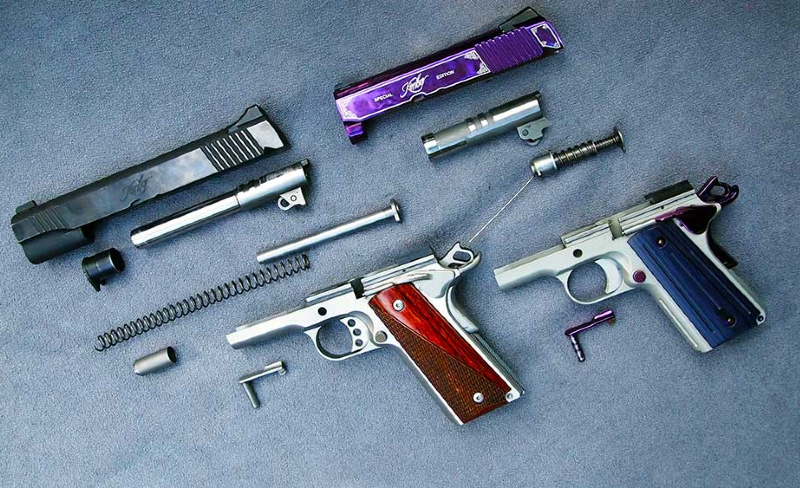
Felt recoil: The momentum/movement a shooter feels when firing a gun. Felt recoil can be improved by a gun’s design and is affected by the caliber the gun is chambered in as well as the gun’s overall size in relation to the said caliber.
Field strip: The act of disassembling a gun as needed for cleaning or inspection. This does not involve taking it entirely apart, just breaking it down enough for basic maintenance.
Finish: The coating—or lack of a coating—on a gun is designed to protect it and/or give it a certain appearance.
Flintlock: A firearm with an ignition mechanism that involves a hammer with a flint to strike a part called a steel frizzen. The impact of the flint on the frizzen creates a spark which in turn ignites the black powder the flintlock is loaded with. This causes the bullet to fire. The flintlock was invented in the 16th century and saw use until the 19th century when firearms invention advanced to replace it with percussion weapons.
Frame: The part of a handgun that holds the action. On a semi-automatic handgun like a Glock, the frame is the lower portion of the gun that includes the grip. On a revolver, the frame refers to a larger portion of the gun (because revolvers do not have slides).
Front sight: A post or bead that might be metal, plastic, or fiber optic, located on the uppermost portion at the muzzle end of the barrel of a gun.
• G •
Government (1911): The first size of 1911 made, this type of gun has a full-sized frame and 5.0-inch barrel. It’s technically the largest 1911 although there are long-slide Government models that have slightly longer barrels.
Grip: The part of the frame gripped by the shooter’s hands during firing. The grip extended downward from the upper part of the frame that attaches to the slide.
Grip panel: Pieces that can be removed and replaced in the grip of a gun to make it thinner or wider. Grip panels are also used to give a handgun a different aesthetic or to change the texture for a better grip during firing.
• H •
Handgun: A gun that’s designed to be fired using two hands and not to be mounted to the shoulder.
Hammer: The part of a gun that either strikes the firing pin, which then impacts the primer of a round of ammunition, or has the firing pin contained in itself and strikes the primer directly.
Hammer-fired: A gun made to fire using its hammer. Some revolvers have firing pins as integral parts of the hammer and some have firing pins separate from the hammer.
Holster: A piece of gear designed to hold a handgun when the gun is not in use. It could be compared to a pocket or sleeve for the gun but should provide far more retention than that description implies.
• I •

Integral sights: Sights built into the slide or barrel of a gun that do not move.
Internal safety: Safety mechanisms that are built into the inside of a handgun instead of being visible outside the gun. For example, Glocks have a series of internal safety mechanisms.
Iron sights: Sights that might be made of metal or plastic that are used to aid in aiming a handgun.
• J •
Jam: The term some people use to reference a malfunction during firing. “Jam” is not the correct word to use for these failures. The correct terms include failure to feed (FTF), failure to eject (FTE), and failure to extract (FTE).
• K •
Kick: A word sometimes used by people to describe how a gun recoils during live-fire. The correct word for this is “recoil” when referring to how much the gun itself recoils and “felt recoil” when talking about the amount of that recoil the shooter themselves feel.
• L •
Laser: A device used to help aim the gun, a laser is usually an aftermarket add-on that mounts to the trigger guard. Lasers must be zeroed in order to be accurate while shooting. They come in green and red.
Limp wristing: A phrase used to describe a problem while shooting handguns with a weak, improper grip. Limp wristing can stop a gun from cycling properly or going back into the battery when a shot is fired.
• M •
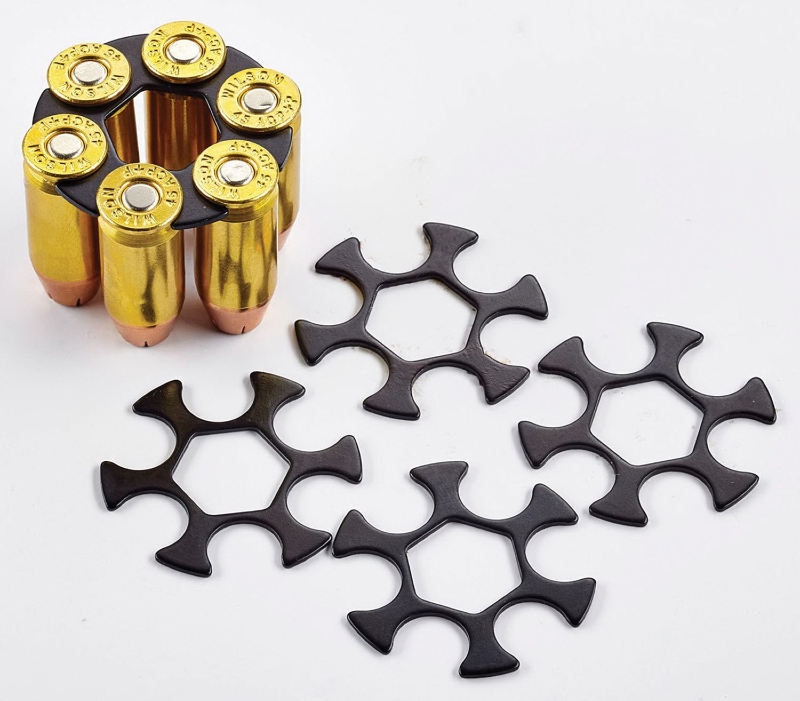
Magazine: The part of a handgun that feeds ammunition to the gun. Generally, magazines are detachable. This part should not be confused with a clip. A good way to remember the difference is that magazines feed guns and clips feed magazines.
Magazine holster: A pouch/holster made specifically to hold one or more spare magazines.
Magazine release: The button or lever on a handgun that functions to release the magazine when depressed.
Magazine well: The open space at the base of the grip of a handgun where the magazine is inserted.
Magnum: Specific cartridges designed to produce more velocity and energy than standard cartridges. Magnum cartridges include 357 Magnum and 44 Magnum.
Moon clip: A circular device made to load revolvers, specifically rimless cartridges such as 45 ACP.
Mouse gun: A tiny gun that basically fits in the palm of the hand—depending on hand size—that’s chambered in a small cartridge. Used for fun or for deep concealment in non-permissive environments.
Muzzle: The open end of the barrel where bullets leave the gun during firing.
Muzzle break: A device that attaches guns with threaded barrels to reduce felt recoil and muzzle rise. A muzzle break does this by redirecting escaping gases. Some muzzle breaks can be tuned for even more precision. The threading and caliber of the barrel have to match the muzzle device; you cannot use just any muzzle break on any gun.
• N •
Night sights: Sights that glow whether due to being painted with luminescent paint or because they’re made from a material designed to glow. Night sights make it significantly easier to aim a handgun accurately in low-light and no-light scenarios.
• O •
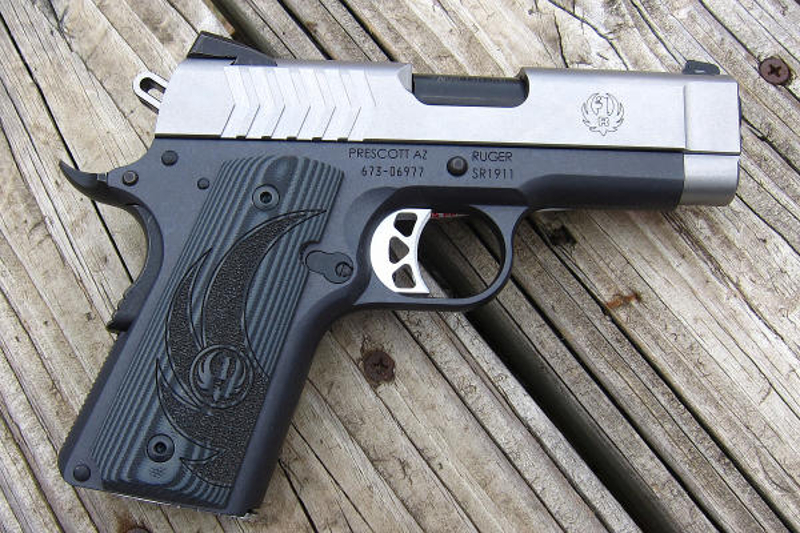
Officer (1911): A compact 1911 with a 3.5-inch barrel that is smaller than a Commander 1911 but slightly larger than a Defender 1911.
Optics ready: Handguns that ship from the factory are ready to have an optic mounted to them. These handguns have removable plates on the top of their slides. The plates are cut to a specific footprint, so check to be sure the red dot sight you want is compatible with the cutout in the slide.
• P •
+P/+P+: Ammunition loaded to a higher internal pressure than the standard load, also referred to as an overpressure round. These rounds are made to produce more velocity and energy than the standard round for the specific cartridge. Not all guns are rated for +P/+P+ use, so take the time to check before firing them through your gun.
Percussion cap: The type of firearm design that came after flintlocks. Percussion caps had closed ends protecting an explosive material and were fired through the percussion/striking of an external hammer which creates a spark that travels into the hollow area containing the explosive. This ignited the explosive which, in turn, fired a projectile down the barrel of the gun. Percussion firearms made it possible for guns to fire despite the weather; flintlocks were problematic in the wind or rain.
Pistol: The same thing as a handgun. See handgun.
Ported/porting: Openings in the slide or barrel of a gun meant to reduce felt recoil and muzzle rise.
Primer: A component of a round of ammunition. The primer of a centerfire cartridge is a small, circular part located at the center of the base of the case. When the firing pin impacts the primer, it ignites the powder inside the case, sending the bullet down the barrel of the gun.
Pull weight: A measurement referring to how much weight, or pressure, is required to move a trigger all the way back for firing.
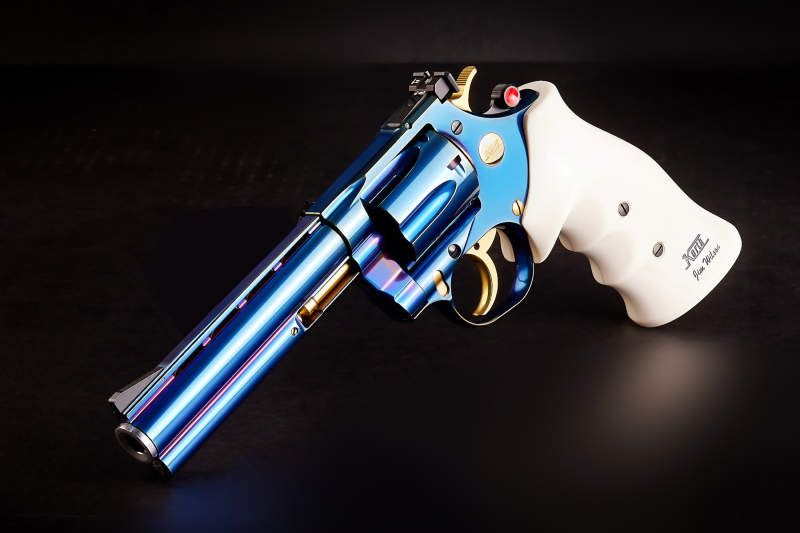
• Q •
—-
• R •
Racking: The action of pulling the slide of a handgun rearward to chamber a round or clear a malfunction.
Rear sight: The sight found at the back of the top of the slide or frame. Rear sights work in conjunction with the front sight, meaning you need to align the front sight between the notches or dots of the rear sight for an accurate shot. The sights need to be set with the same line of sight and height to work.
Recoil: The momentum of the gun generated by live fire. Larger caliber handguns will produce more recoil than smaller calibers, but the overall design and weight of the handgun in question plays a role in mitigating or worsening felt recoil. That means a tiny gun chambered in 380 ACP can produce more felt recoil than a larger gun chambered in 9mm.
Recoil-operated: A semi-automatic handgun with a barrel and breech block made to recoil rearward during firing.
Red dot sight: An optic designed to be mounted to the top of a handgun that has a colored dot at its center for the purpose of aiming. Usually made in green or red and offered with or without magnification.
Revolver: A handgun with a revolving cylinder containing multiple chambers that line up with the gun’s barrel and rotate counterclockwise during firing.
Rimfire: A cartridge that fires when the firing pin of the gun strikes its edge, rather than its center. Rimfires are designed with thinner case walls for easier firing. For example, 22 LR.
• S •
Safety: Can be used in reference to the safety mechanisms on a handgun or when talking about the safety behaviors of shooters.
Sear: A component of a gun’s trigger that’s made to hold the hammer, or a similar part, to the rear until the shooter pulls the trigger far enough back to activate the mechanism so the gun fires.
Semi-automatic: A handgun that fires one shot for one pull of the trigger and automatically loads the next round of ammunition into the gun so the next shot can be fired.
Series 70: The original 1911 was created without a firing pin block safety, among other different features. The Series 70 ended up being changed which resulted in the Series 80 1911.
Series 80: The newer-design 1911 with a firing pin block safety, among other modernized features that the Series 70 1911 does not have.
Shoulder holster: A holster made with straps so it can be worn over the user’s shoulders. This type of holster might hold one gun on one side of the body or a gun on each side. Some styles also have magazine holsters attached.
Side plate: A metal plate fitted to a specific model of revolver designed to allow access to the internal workings of the revolver for repairs. Side plates are held in place with crowned or flat screws in differing numbers depending on the gun.
Sidearm: A gun specifically designed to be carried holstered on the body.
Sight radius: The distance between the front and fear sight which might be measured in inches or millimeters.
Sighting in: The practice of getting iron sights properly aligned for firing. Some front sights are fixed but many are adjustable. The same goes for rear sights, most of which are adjustable, but often only for drift. Only some rear sights are height adjustable. Adjusting iron sights for accuracy is called sighting in, which is different than zeroing an optic.
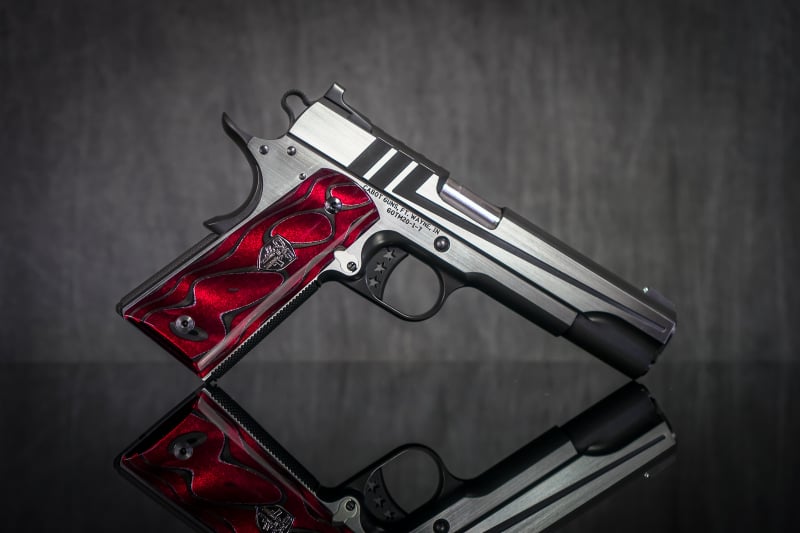
Single-action (SA): A gun designed so the trigger releases the hammer when it is pulled. This differs from double-actions, which have triggers that both cocks and releases the hammer, resulting in a longer, heavier trigger. 1911s are single-action. Although a lot of revolvers are double-action, many are DA/SA, and there are semi-automatic handguns that are DA.
Single stack: A gun designed for use with a magazine that holds rounds of ammunition in a single column. The grips on single-stack guns are narrower and the overall weight of the gun is less than that of a double-stack, but they do have less capacity.
Skeletonized trigger: A trigger designed with cut-outs in it, whether for aesthetic purposes or to lighten the overall weight of the gun and/or trigger itself. Many 1911s have skeletonized triggers.
Slide: The part of a handgun located on top of the gun’s frame of the firearm. It covers and houses the barrel and other parts, like the firing mechanism/fire control group. Slides have an opening on one side for spent brass to eject and move forward and rearward along the frame of the handgun as it recoils during live fire.
Slide lock: See slide stop.
Slide release: See slide stop.
Slide serrations: A series of cuts or grooves that may be straight, angled, or wavy that are machined into the sides and/or top of a handgun’s slide. These serrations are designed to facilitate manipulating the slide. They might be located only at the rear of the slide or at both the front and rear.
Slide stop lever: See slide stop.
Slide stop: A small, protruding part on the side of the slide of a handgun meant to hold the slide in an open position when the magazine is empty. Also used to lock the slide open to show clear.
Small arms: Firearms such as handguns that are made to be easily portable.
Snub nose: A revolver made with an extremely short barrel. Also commonly called a “snubby.”

Speed strip: A flat, elongated strip of rubber, or another pliable material, designed to hold cartridges by their bases so it’s possible to re-load a revolver cylinder faster.
Speedloader: A circular device that holds cartridges by their base according to precise spacing so they line up with the chambers of a revolver’s cylinder. Speedloaders are designed for specific models of revolvers and are not one size fits all.
Stippling: A method used to create texture or some sort of design on the rubberized/polymer grip of a handgun. Might be used to ensure a firmer grip or for aesthetic purposes.
Striker: See striker-fired.
Striker-fired: A handgun action where the slide has to be manipulated rearward in order to cock the internal striker. When the shooter pulls the trigger disengages its safety mechanisms which frees the striker to impact the primer of the loaded cartridge and fire the gun. Glocks are striker-fired but there are a lot of other striker-fired handguns as well.
Suppressor: A cylindrical device that has internal baffles specially designed to reduce the sound of gunshots. Unlike what is suggested by Hollywood, suppressors do not fully silence the sound of gunfire. A suppressor reduces the decibels to a safer, lower level which helps protect the shooter’s hearing and also has benefits for hunters. There is still an audible report during live-fire, it’s just not deafening.
• T •

Trigger: A bladed mechanism created to activate the action of a handgun so it will fire. There are quite a few different kinds of triggers available. For example, there are basic factory safety blade triggers, MIL-SPEC curved triggers, and aftermarket styles with interchangeable shoes. Aftermarket triggers not only have different trigger blades or shoes but can be adjusted more fully for trigger pull weight. Other possible adjustments include height, cant, reach, and re-set distance.
Trigger guard: The part of a handgun that is typically integral to the frame, but not always, made to surround the trigger. Some trigger guards allow for ample room to pull the trigger, even with gloved hands, but others are smaller and can be more difficult to use if you’re wearing gloves. The trigger guard is not there for the shooter to wrap their finger around. Generally speaking, wrapping your finger around the trigger guard creates an unbalanced grip, uneven pressure, and an overall poor hold on the gun. This causes the gun to be pulled to one side or the other, hampering accuracy and safety. On rare occasions, a person discovers that extra contact point benefits them rather than hurting them, but those are the exceptions, not the rule.
• W •
Wheel gun: Slang for a revolver that references the gun’s cylinder, which might be comparable to a wheel. See revolver.
White 3-Dot Sight: This is an extremely common phrase in the handgun world and refers to an older 3-dot style of iron sights. This setup has two white dots on the rear sight and one white dot on the front sight, leaving the shooter to line up the front sight dot between the pair of rear sight dots. This older style of coloring and designing iron sights can be more difficult for some shooters to use than other, contrasting designs. It simply depends on the person.
• X •
X-Ray Day/Night Sights: This does not refer to sights you can literally see through but is instead what some sights are called to describe their design. Most “X-ray” sights have a two-dot white or tritium rear sight and a colored or fiber optic front sight post. The brighter orange, green, or red of the front sight draws the eye and can be easier for many shooters to line up between the rear sight dots.
• Y •
Yoke (revolver): See crane.
• Z •
Zero: The act of zeroing a gun applies to an optic, not iron sights. It is possible to mount optics and red dots to handguns, so if you need to get those types of optics on target so the point of aim matches the point of impact at a certain distance, you are zeroing. If you’re getting iron sights on target, the correct terminology is that you’re sighting it in.


